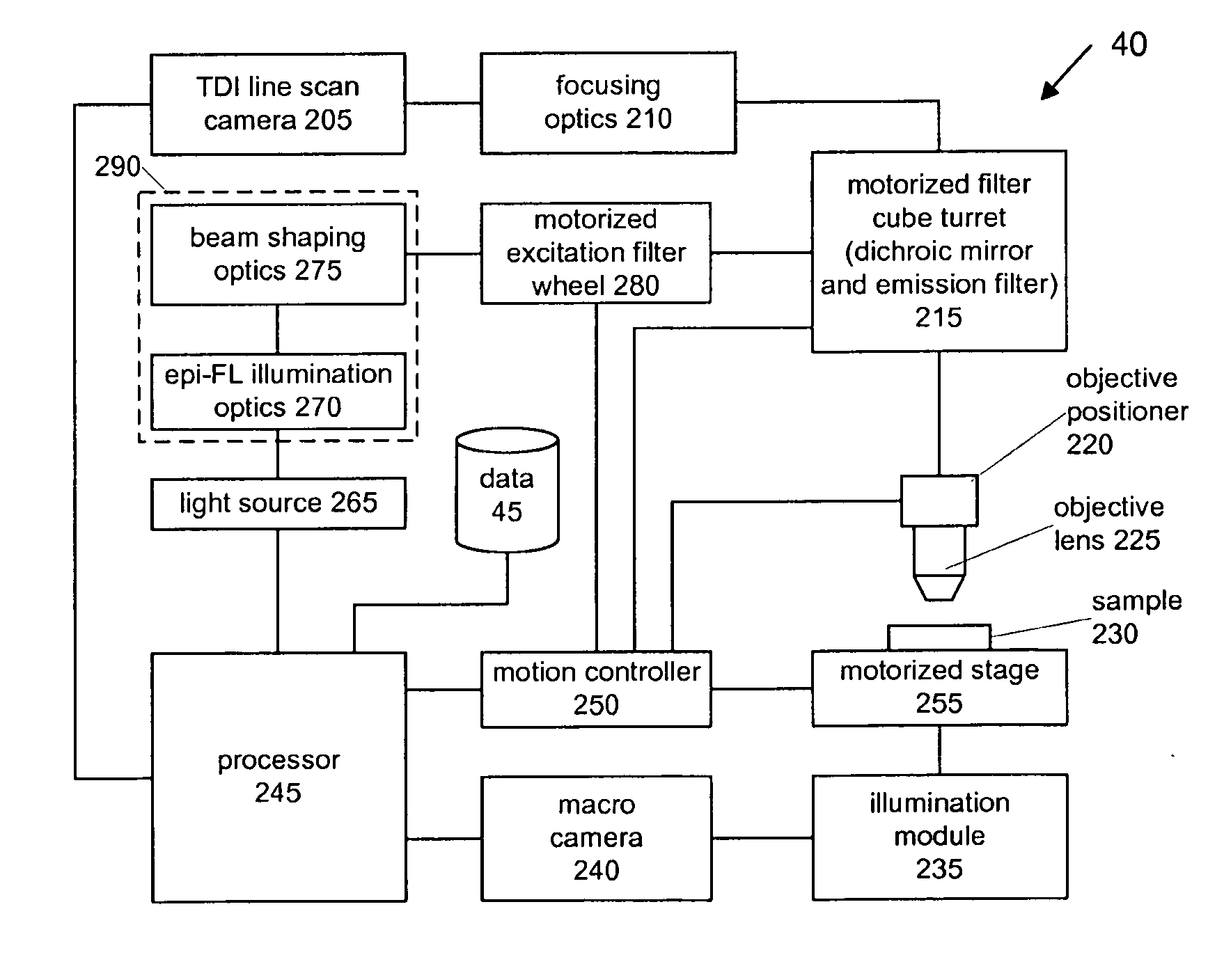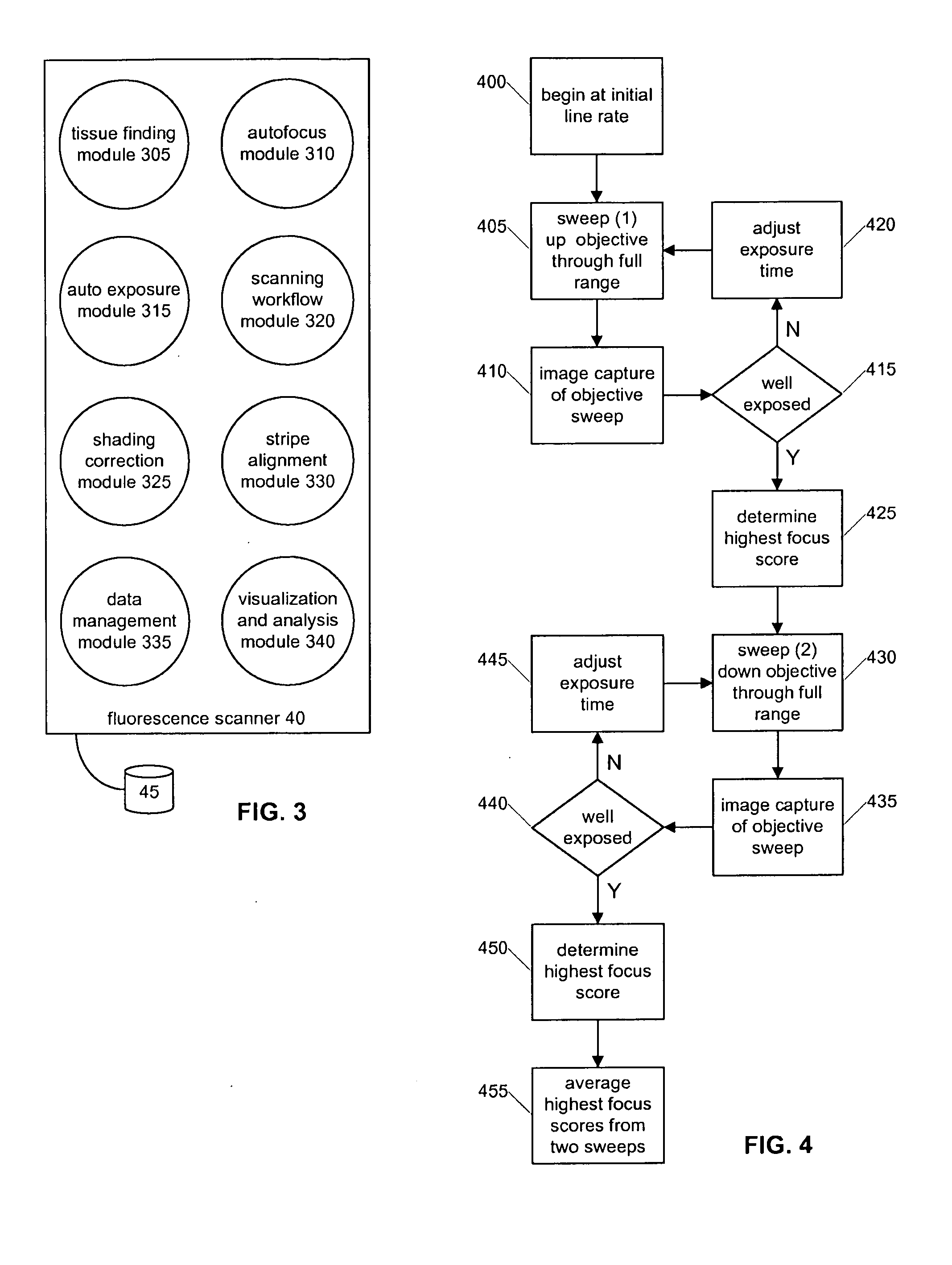Whole Slide Fluorescence Scanner
a fluorescence scanner and slide technology, applied in the field of digital pathology, can solve the problems of low efficiency of light emission, and low efficiency of line scan cameras in brightfield scanning, and achieve the effects of improving sensitivity, speed and accuracy, and increasing line ra
- Summary
- Abstract
- Description
- Claims
- Application Information
AI Technical Summary
Benefits of technology
Problems solved by technology
Method used
Image
Examples
Embodiment Construction
[0020]Embodiments disclosed herein provide for a whole slide fluorescence scanning system and methods of operation of a fluorescence scanning system. After reading this description it will become apparent to one skilled in the art how to implement the invention in various alternative embodiments and alternative applications. However, although various embodiments of the present invention will be described herein, it is understood that these embodiments are presented by way of example only, and not limitation. As such, this detailed description of various alternative embodiments should not be construed to limit the scope or breadth of the present invention as set forth in the appended claims.
[0021]FIG. 1 is a network diagram illustrating an example fluorescence scanner system 100 according to an embodiment of the invention. In the illustrated embodiment, the system 100 comprises a fluorescence scanning system 40 that is configured with a data storage area 45. The fluorescence scanning...
PUM
 Login to View More
Login to View More Abstract
Description
Claims
Application Information
 Login to View More
Login to View More - R&D
- Intellectual Property
- Life Sciences
- Materials
- Tech Scout
- Unparalleled Data Quality
- Higher Quality Content
- 60% Fewer Hallucinations
Browse by: Latest US Patents, China's latest patents, Technical Efficacy Thesaurus, Application Domain, Technology Topic, Popular Technical Reports.
© 2025 PatSnap. All rights reserved.Legal|Privacy policy|Modern Slavery Act Transparency Statement|Sitemap|About US| Contact US: help@patsnap.com



